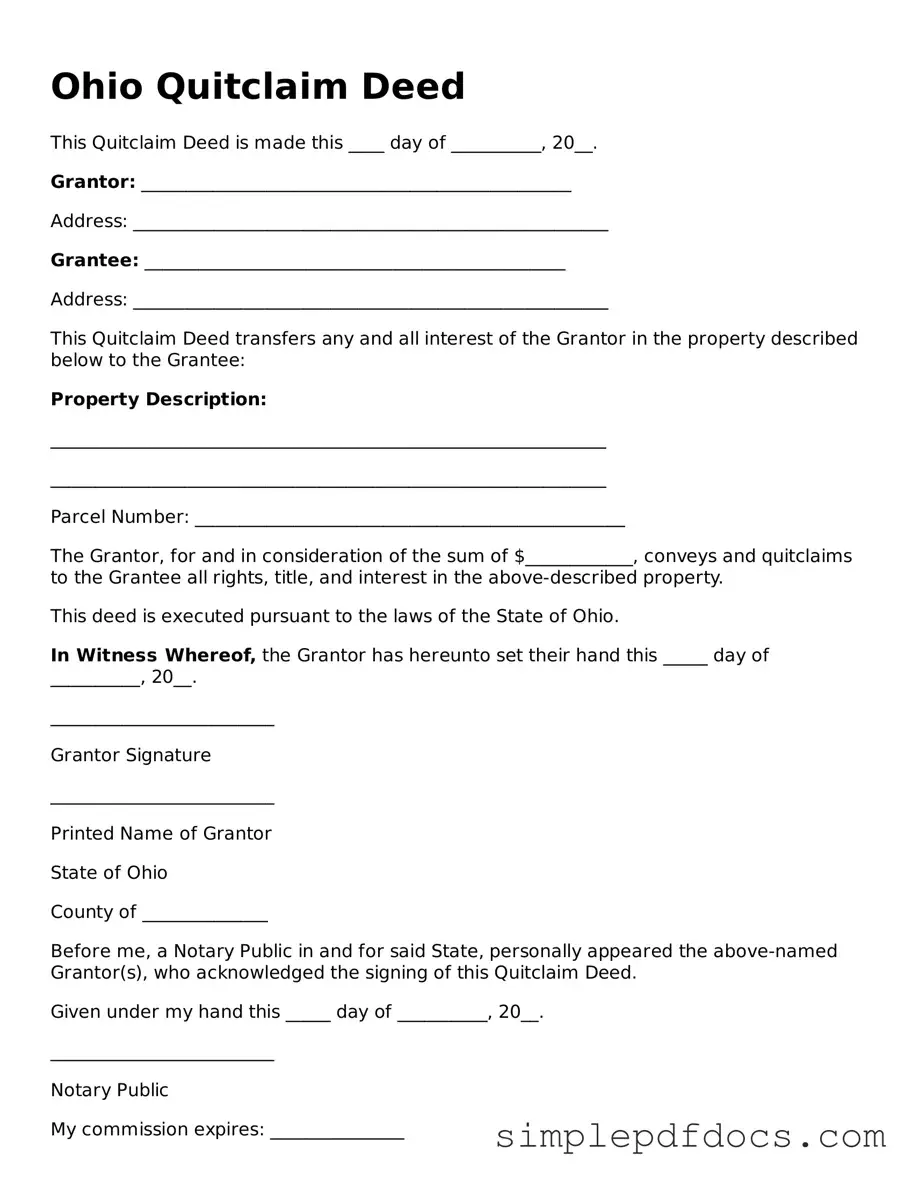In the realm of real estate transactions, the Ohio Quitclaim Deed serves as a valuable tool for property owners looking to transfer their interests in a property without the complexities often associated with traditional sales. This form simplifies the process, allowing one party, known as the grantor, to convey their rights to another party, the grantee, without making any guarantees about the property's title. It is particularly useful in situations such as transferring property between family members, clearing up title issues, or facilitating a divorce settlement. While the Quitclaim Deed does not provide any warranties regarding the property’s condition or any existing liens, it is a straightforward means of transferring ownership. Understanding the nuances of this form is essential for anyone involved in property transactions in Ohio, as it can help avoid potential disputes and ensure a smooth transfer of ownership. Additionally, proper completion and recording of the deed with the county recorder's office are crucial steps in the process, safeguarding the interests of both parties involved.
